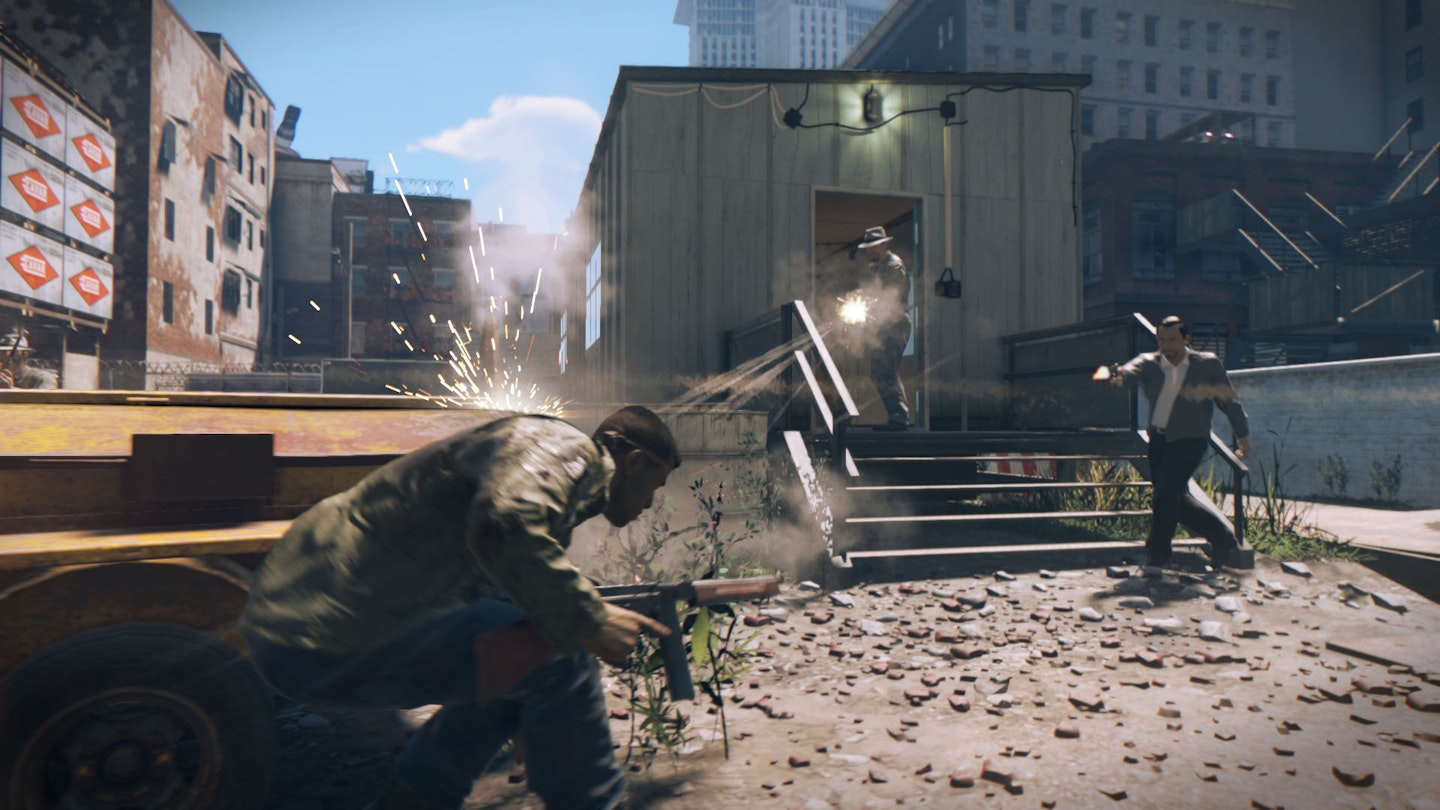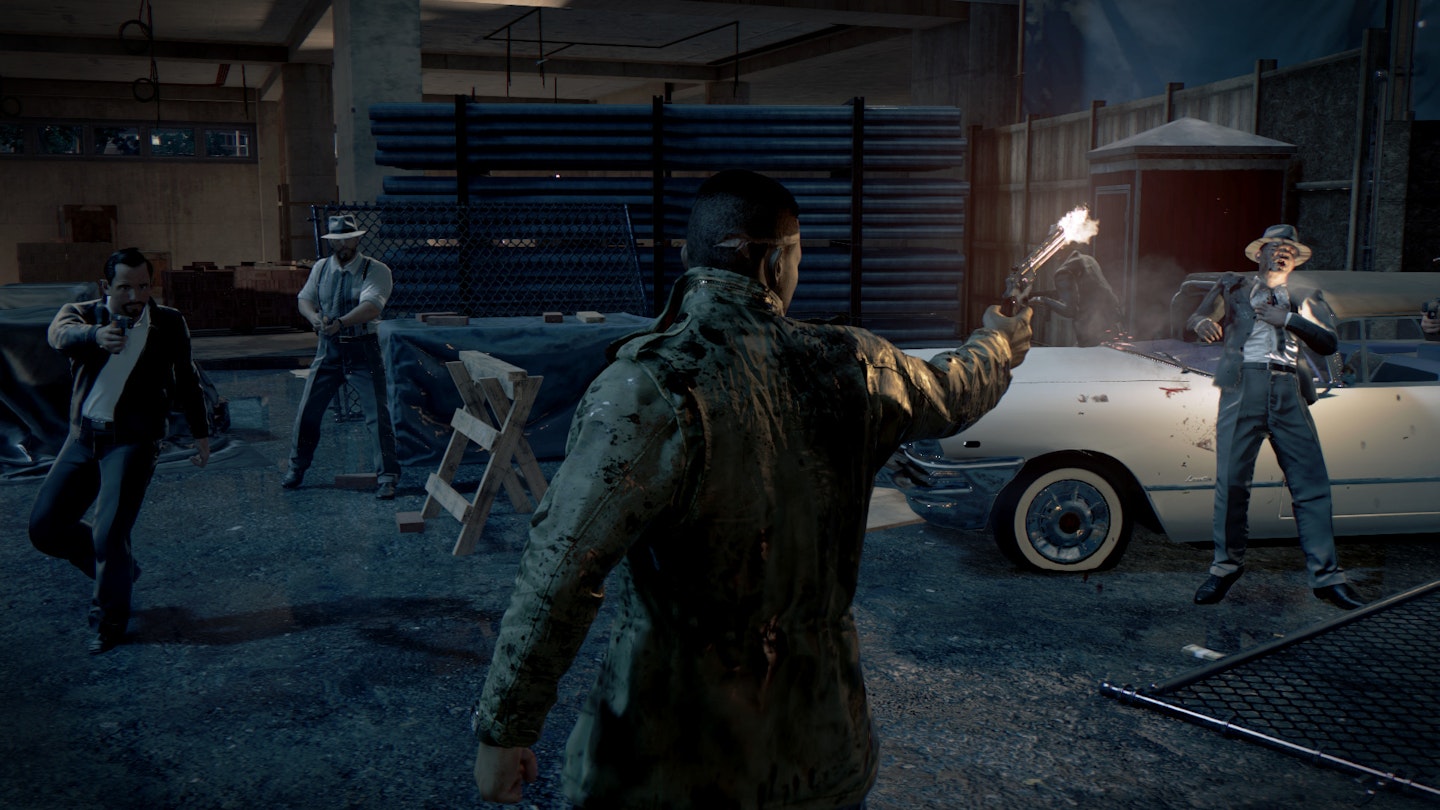On paper, Mafia III has the potential to be a Grand Theft Auto-beater. Like GTA, it’s a third-person action-adventure game and, interestingly, it's set in 1968. It has a black protagonist (and spares nothing in confronting the prevailing racial attitudes of the time), and chronicles some proper mob and gang action. But despite being up there with the likes of GTA in certain respects, in others — most notably its gameplay — it falls short.
Mafia III tells the blood-soaked story of Lincoln Clay, returning to New Bordeaux (a thinly disguised New Orleans) after a tour with US Special Forces in Vietnam. Clay finds that Sammy, his surrogate father — a smallish crime boss in the part of town known as The Hollow — has become involved in a war with a Haitian gang based in the bayou. So Lincoln puts his military skills to use and sorts that problem out. Then he agrees to participate in a bank robbery on behalf of Sal Marcano, the local mafia boss, only to get stitched up and left for dead.

After recovering, Clay vows to exact revenge by becoming the city’s crime overlord, picking off the men who profited from his betrayal one by one, taking over their operations and working up to Marcano. It's when he starts setting that plan into action that the game begins in earnest.
Once the narrative settles down, a pattern quickly emerges: you must disrupt the operations of whichever underboss you’re going after — such as a prostitution operation and brothel run by the Dixie gang, or a union extortion racket run by the Irish. Then, when you flush the bosses out, you can either take them out or spare them and press them into use as your lieutenants. Through all this there’s a cash-raising mechanic which requires you to generate a large amount of money from your burgeoning crime empire before you have enough of a float to take on Marcano.
The trouble is it all feels terribly formulaic. Given the type of game Mafia III is, comparisons with Grand Theft Auto are inevitable, and the latter feels much more free-form, open-world and varied. It takes an age, for example, before side-missions begin to appear on the map, and when they do they're very prosaic, such as picking up bundles of marijuana dropped from planes and driving them in a truck to one of your warehouses. The random occurrences and memorable, multi-stage missions that form the life-blood of GTA are completely absent from Mafia III.

It’s a real shame that structurally, Mafia III feels so regimented, since many aspects of the game are top-notch. Lincoln Clay makes use of a decent stealth engine (although the dumber-than-a-bag-of-hammers AI makes it far too easy to attract individual enemies and take them out) and the cover-shooting mechanic is similarly well-constructed. The story is absorbing, conveyed by some great cut-scenes which do, however, take up much more of your play-time than is normal in this day and age. Graphically, Mafia III impresses — it has loads of authentic late-60s atmosphere (enhanced by some great radio stations), and the care that has been put into designing a plausible, geographically diverse and huge city shines through.
Mafia III fails to live up to its promise as a genre-beater. It’s still a good game, but too much of the time it feels like a very long film to which some incidental gameplay has been added. There's upside here for gangster film fans, who will doubtless enjoy the ride, but hardcore gamers will find it unsatisfying.
